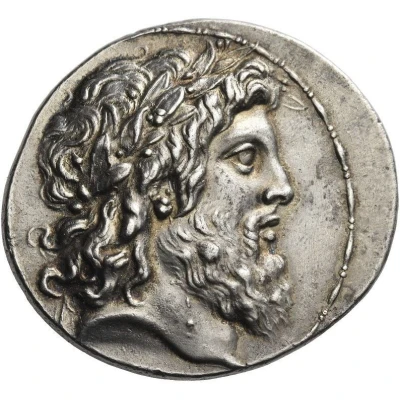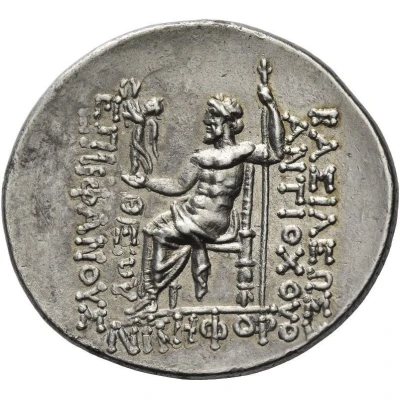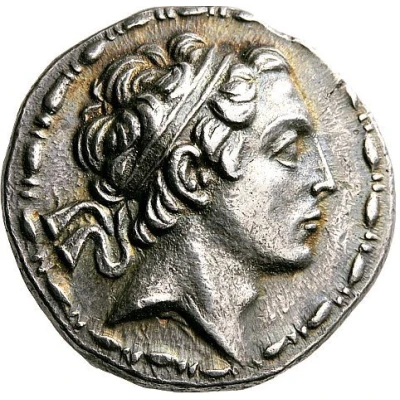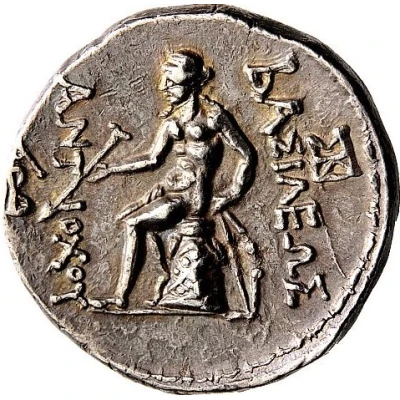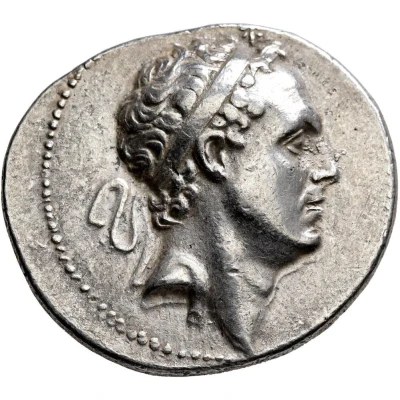
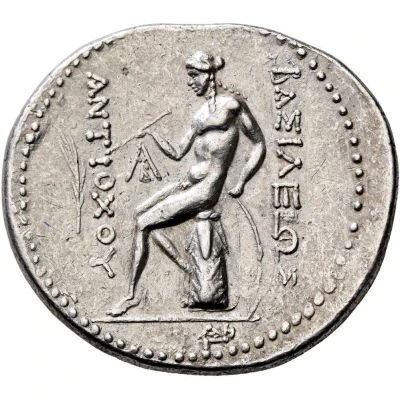

Tetradrachm - Antiochos IV Epiphanes (Ake-Ptolemais) 168 BC
168 BC year| Silver | 17.08 g | 32 mm |
| Issuer | Seleucid Empire (Seleucid Empire (305 BC - 64 BC)) |
|---|---|
| King | Antiochos IV Epiphanes (175 BC - 163 BC) |
| Type | Standard circulation coin |
| Year | 168 BC |
| Value | Tetradrachm (4) |
| Currency | Drachm |
| Composition | Silver |
| Weight | 17.08 g |
| Diameter | 32 mm |
| Shape | Round (irregular) |
| Technique | Hammered |
| Orientation | Medal alignment ↑↑ |
| Demonetized | Yes |
| Updated | 2024-10-10 |
| Numista | N#425161 |
|---|---|
| Rarity index | 100% |
Reverse
Apollo seated left on omphalos, holding arrow in his right hand and resting his left on grounded bow; to outer left, palm frond; to inner left, monogram of AB; in exergue, monogram.
Script: Greek
Lettering: BAΣIΛEΩΣ ANTIOXOY
Comment
The coinage of Antiochos IV at Ake-Ptolemais was issued to support his invasions of Ptolemaic Egypt in 170-168 BC, the so-called Sixth Syrian War. The present issue is dated by Houghton & Lorber to the summer/fall of 168 BC or slightly later, right after the infamous 'Day of Eleusis', when the Seleukid monarch was humiliated by the Roman emissary, Gaius Popillius Laenas. Victorious on all fronts, Antiochos IV had just invaded Egypt for the second time, captured Memphis and was advancing on Alexandria to annihilate the Ptolemaic Kingdom once and for all, when Laenas arrived on the scene. Worried about a resurging Seleukid superpower, the senator refused to greet the king, drawing a line around him in the sand with a stick and ordering the baffled monarch to chose between immediate withdrawal from Egypt or war with Rome before leaving the circle. Fearing Roman intervention, Antiochus IV backed down and left Egypt immediately. In doing so, he revealed to the entire world that even the most powerful of all Hellenistic states was unwilling and unable to challenge Roman hegemony in its own backyard.
Interesting fact
One interesting fact about this coin is that it features an image of the god Apollo on one side and the king Antiochos IV Epiphanes on the other, highlighting the blending of Greek and Persian cultures that characterized the Seleucid Empire.
